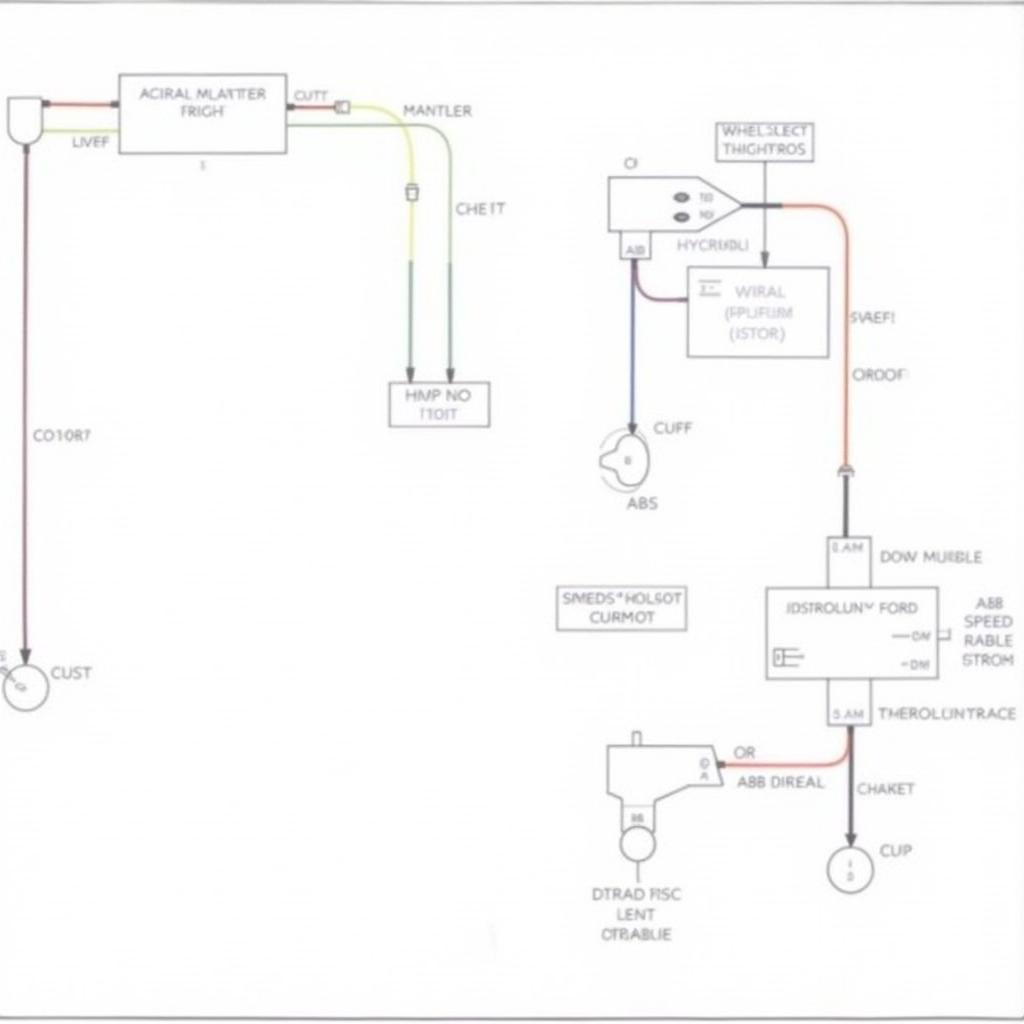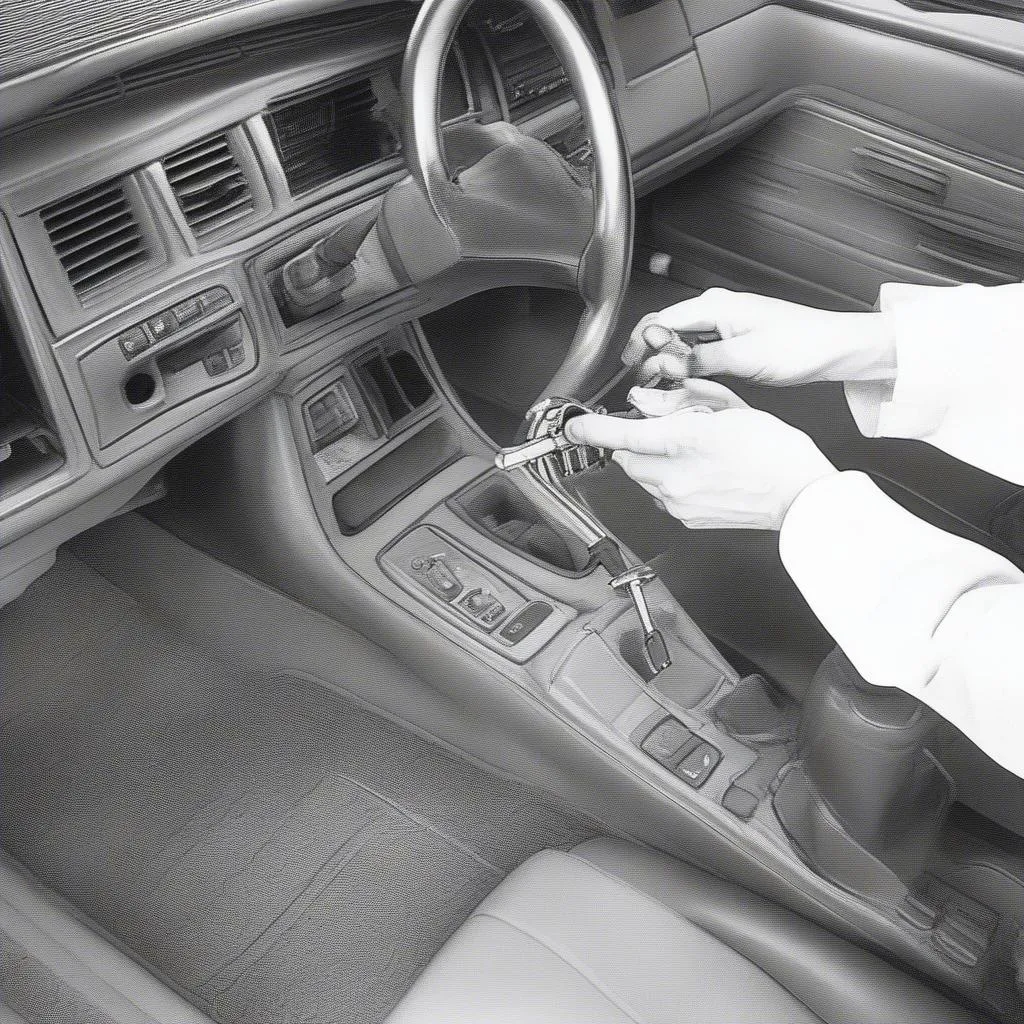The anti-lock brake system (ABS) warning light on your Ford Escape 2012 is a crucial safety indicator. When illuminated, it signifies a potential issue with your vehicle’s ABS, which plays a vital role in preventing wheel lockup during braking, especially on slick surfaces. Ignoring this warning could compromise your ability to maintain control while braking, leading to hazardous situations.
This comprehensive guide delves into the common causes behind the ABS warning light in a 2012 Ford Escape and provides potential solutions to help you address this issue effectively.
Understanding Your Ford Escape’s ABS
Before we dive into the diagnostics, it’s helpful to understand how the ABS in your Ford Escape functions. The system comprises several key components:
- Wheel speed sensors: These sensors, located at each wheel, constantly monitor wheel speed and relay this information to the ABS control module.
- ABS control module: The brain of the system, the control module, processes the data from the wheel speed sensors. If it detects an impending wheel lockup during braking, it takes over and modulates the brake pressure to each wheel individually.
- Hydraulic control unit: This unit houses valves that regulate brake fluid pressure to each wheel based on the control module’s instructions.
Common Causes of the ABS Warning Light
Several factors can trigger the ABS warning light on your 2012 Ford Escape. Let’s explore some of the most common culprits:
1. Faulty Wheel Speed Sensors
Wheel speed sensors are among the most frequent offenders. As they are exposed to road debris, dirt, and grime, these sensors can become damaged or malfunction. A faulty sensor sends incorrect signals to the ABS control module, causing the warning light to illuminate.
2. Low Brake Fluid Level
Brake fluid is the lifeblood of your Ford Escape’s braking system, including the ABS. If the brake fluid level drops below the minimum, it can disrupt the hydraulic pressure required for the ABS to function correctly, triggering the warning light.
3. ABS Control Module Issues
While less common, problems within the ABS control module itself can also trigger the warning light. This could be due to electrical faults, software glitches, or component failure within the module.
4. Blown Fuses or Electrical Problems
The ABS system relies on various fuses and electrical circuits to function correctly. A blown fuse or a wiring issue can interrupt the flow of power or signals, leading to ABS malfunctions and illuminating the warning light.
 Ford Escape ABS Wiring Diagram
Ford Escape ABS Wiring Diagram
5. Hydraulic Control Unit Malfunction
The hydraulic control unit, responsible for regulating brake fluid pressure, can also experience issues. Problems with the valves or internal components can disrupt the ABS operation and activate the warning light.
Troubleshooting the ABS Warning Light
Now that we’ve covered the common causes, let’s discuss how to troubleshoot the ABS warning light on your 2012 Ford Escape:
Note: Before attempting any repairs yourself, it’s crucial to consult your vehicle’s owner’s manual for specific instructions and safety precautions.
-
Check Brake Fluid Level: Begin with the simplest solution. Open the hood and locate the brake fluid reservoir. Check the fluid level against the minimum and maximum markings on the reservoir. If the level is low, add the recommended brake fluid type as specified in your owner’s manual.
-
Inspect Wheel Speed Sensors: Visually examine the wheel speed sensors behind each wheel for any visible damage, such as cracks, loose connections, or debris buildup. Clean the sensors if necessary. If you suspect a faulty sensor, consider replacing it with a new one.
-
Scan for Diagnostic Trouble Codes (DTCs): If the warning light persists, a diagnostic scan is your next step. This involves connecting a scan tool to your vehicle’s OBD-II port to retrieve any stored DTCs related to the ABS. These codes can pinpoint the specific area of the ABS requiring attention.
-
Seek Professional Help: If the problem persists after checking the basics and scanning for codes, it’s best to seek professional assistance. A qualified mechanic specializing in Ford vehicles can accurately diagnose and repair more complex ABS issues, such as control module malfunctions or hydraulic unit problems.
2012 f250 brake fluid low warning af
Addressing “Ford Escape 2012 Anti Lock Brake System Warning Light” Effectively
When you encounter the ABS warning light in your 2012 Ford Escape, understanding the potential causes and taking a systematic approach to troubleshooting can save you time, money, and potential safety risks. Always prioritize safety and consult your vehicle’s owner’s manual or seek professional help when needed.
“A well-maintained ABS is crucial for safe driving,” says John Smith, a certified automotive technician with over 15 years of experience specializing in Ford vehicles. “Regularly checking your brake fluid level and addressing any warning lights promptly can go a long way in preventing more significant ABS issues down the road.”
Frequently Asked Questions
Q: Can I still drive my Ford Escape with the ABS warning light on?
A: While you may still have conventional braking, the ABS functionality will be deactivated. This means your wheels could lock up during hard braking, especially on slippery surfaces, increasing the risk of an accident. It’s crucial to have the issue addressed as soon as possible.
Q: How much does it cost to fix an ABS light on a Ford Escape?
A: The repair cost can vary significantly depending on the underlying cause. A simple brake fluid top-up might cost a few dollars, while replacing a faulty ABS control module could cost several hundred dollars or more.
Q: How often should I check my Ford Escape’s brake fluid?
A: It’s good practice to check your brake fluid level at least once a month and top it up if needed. Additionally, have your brake system inspected by a qualified mechanic annually or as recommended in your owner’s manual.
By staying proactive with your Ford Escape’s maintenance and addressing any warning lights promptly, you can ensure the optimal performance and safety of your vehicle’s braking system.

